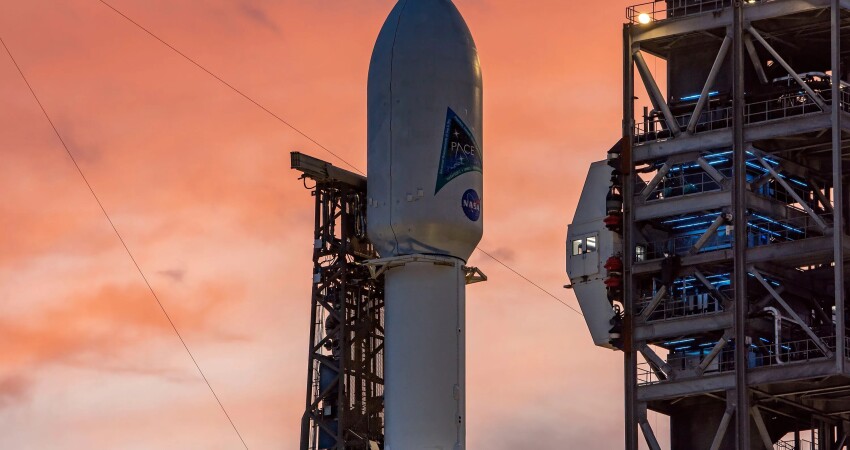For decades, NASA – the National Aeronautics and Space Administration – has provided satellite images of the sea, revealing late winter and autumnal algal blooms in upwelling regions. The data was useful, to a degree, but limited. “We were getting a signal using six or seven colors from the rainbow,” says PACE project scientist Jeremy Werdell. “With the new technology, we are reading 200 different colors of the rainbow.”
Werdell notes that NASA's PACE (Plankton, Aerosol, Cloud, ocean Ecosystem) spacecraft was deployed into orbit by SpaceX's Falcon 9 rocket, which launched on Jan. 30, 2024, from the Kennedy Space Center in Florida. “It’s a dedicated satellite with three (word), one of which is collecting color imagery from the sea surface.”
Werdell points out that he and the Earth Science team used to be able to see algal blooms and how they moved in relation to seafloor topography. “But now, with this color spectrum we can identify what type of plankton we’re seeing – whether its diatoms of some harmful cyanobacteria or dinoflagellates.”
Assuming that filter feeders are attracted to the zooplankton feeding on the diatoms, and that will transmit up the food chain, Werdell believes that this technology will provide data that can help fishermen and fish managers predict abundance of target species. Werdell also contends that being able to see where chlorophyll and plankton are in relation to subsea topography can help fishermen predict where fish are going to show up, and that will help increase efficiency.
The satellite will also monitor aerosols and cloud cover and collect data that will provide the science team with a better picture of how these interact with the ocean. Aerosols for example can deposit nutrients into the ocean, fueling plankton growth, phytoplankton can release particles to the atmosphere that lead to the formation of clouds.
“There is so much data coming back that we recognize the need to develop machine learning to process it all,” Werdell says. “We see how computer science is folding itself into environmental science and we’re getting young, early career scientists in on this to help make those connections.”
Werdell notes that all the data being collected is open source. “You can come and look at it in NASA Worldview, or you can get a subscription to the images you want on a regular basis, or people can come play with the data,” he says, noting that the project has an early adopters promotes applied science and applications research designed to scale and integrate PACE data into policy and practice.
“We want to hear from people,” says Werdell. “We want to know how they are using the data and what they need, anything from soup to nuts.”







